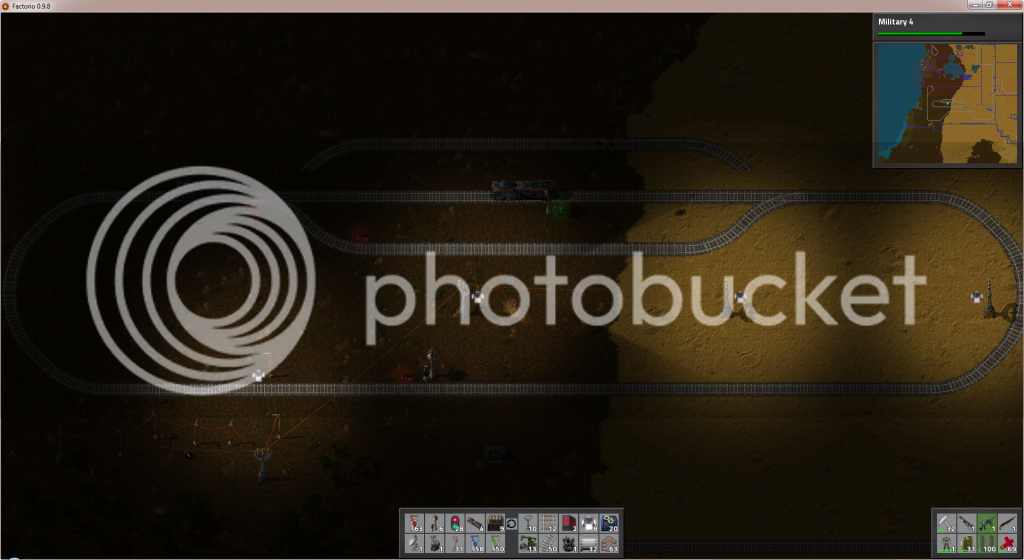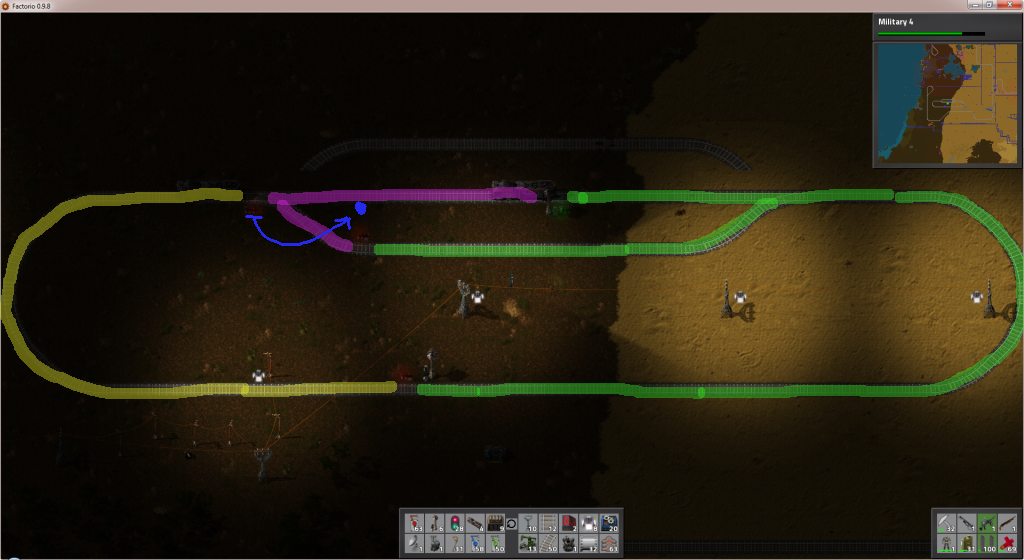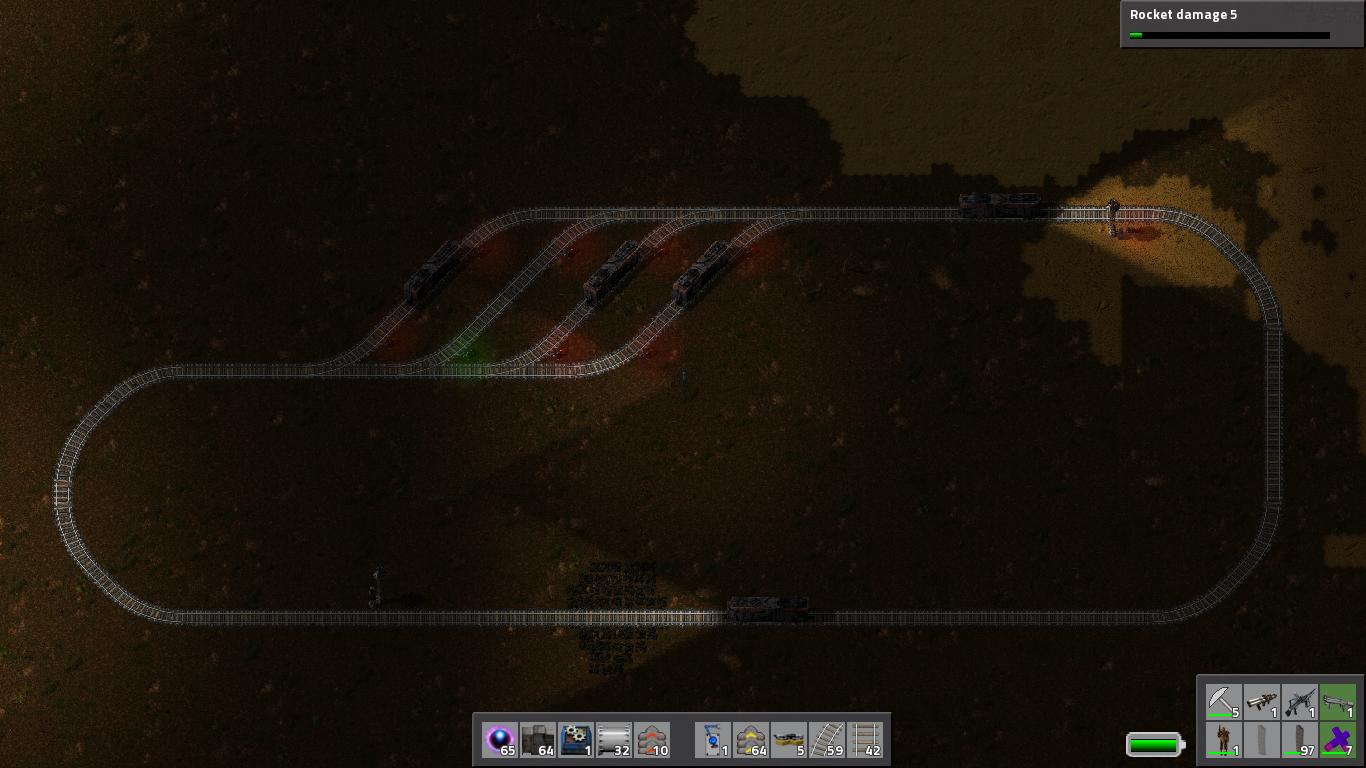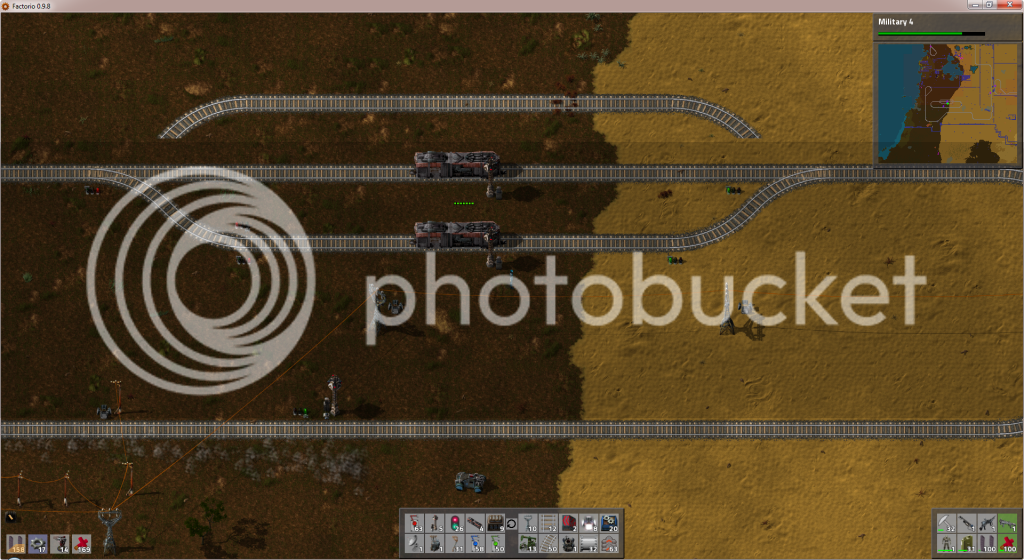Ah, I see. My screen is probably not wide enough. Still, in some places I see the images are closed in a box (with a + to open them) that have scroll bars. I wonder how it's done.
I'm sorry I confuse you with talking about blocks, but this is the way the game refers to them, and I do think it is the best way to understand the way the signals work.
A block is simply all rail segments touching that you can reach without crossing a signal. In other words - if you can reach from one point to another without passing a signal (and for this it doesn't matter on which side the signal is!) then those points are on the same block. If there is no way to reach from one point to the other without crossing at least one signal - they are on different blocks.
You can see what block a rail segment (or piece - a single item you laid, that is) is by hovering the mouse over it and looking at the info pane (under the minimap). The numbers are given quite randomly, though, so you can have one block 148 and the other 72 for example. Still - it can help you see if two parts are on the same block or not.
Once you know what blocks are, remember there is only one rule - only a single train can occupy a block at any given time. That means that if a train is inside a block all signals leading _into_ this block will be red. When hovering over a signal you should be able to see the block before and block after number.
Going back to my example - I have numbered the blocks so you can see them easier. Remember - the game assigns different numbers, but they don't really matter.
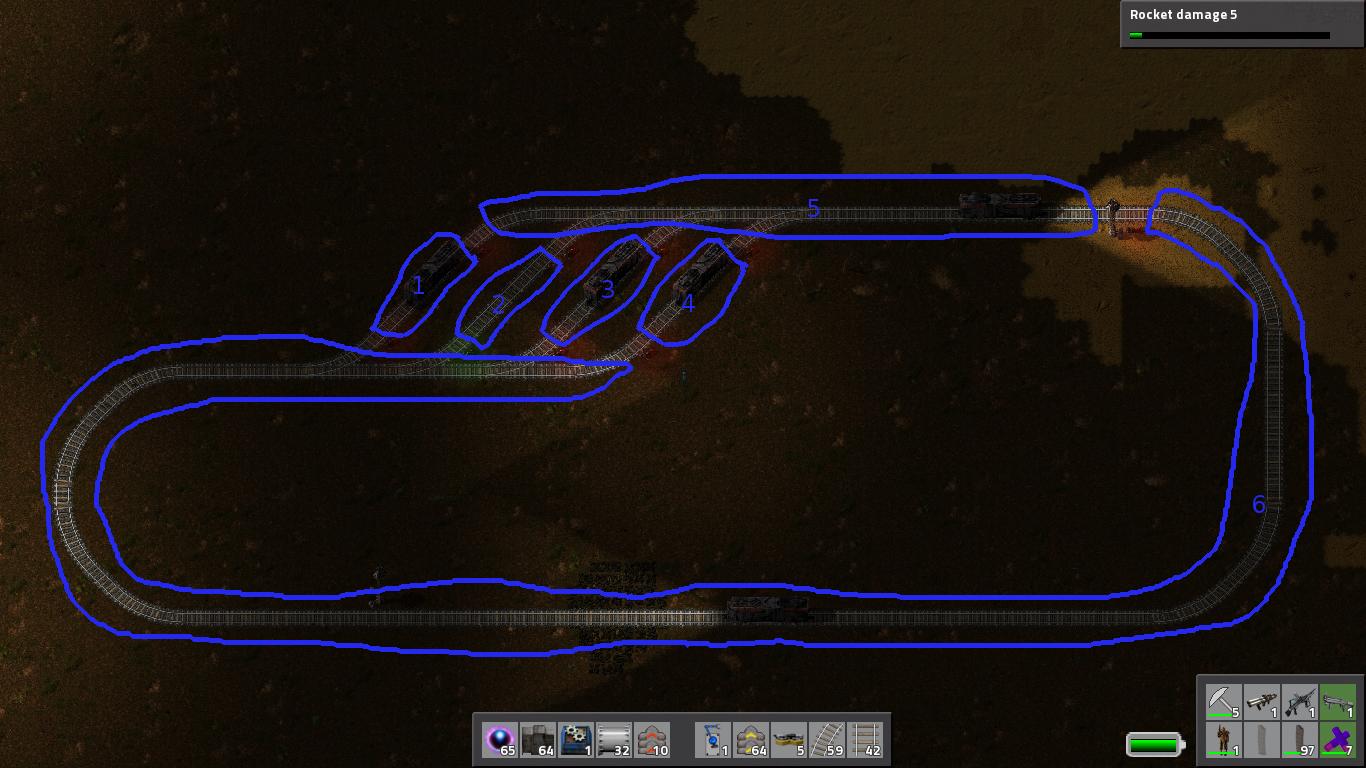
As you can see - there is a train now in the station block (Which I numbered 5). That's why all of the signals leading into it (That is - the signals in the waiting platforms) are all red.
There is also a train in block 6, that is why the signal immediately after the stop is red.
Blocks 1, 3 and 4 are also occupied, so the signals into them are red, but as block 2 is empty the signal into it is green.
(I see I painted over the signals in a few places, but you can still see the light around them

)
As for your example - I suspect if the top train is in it's station the bottom train will wait _before_ the fork. That is because the fork and the top stop are both in the same block, which I numbered 2:
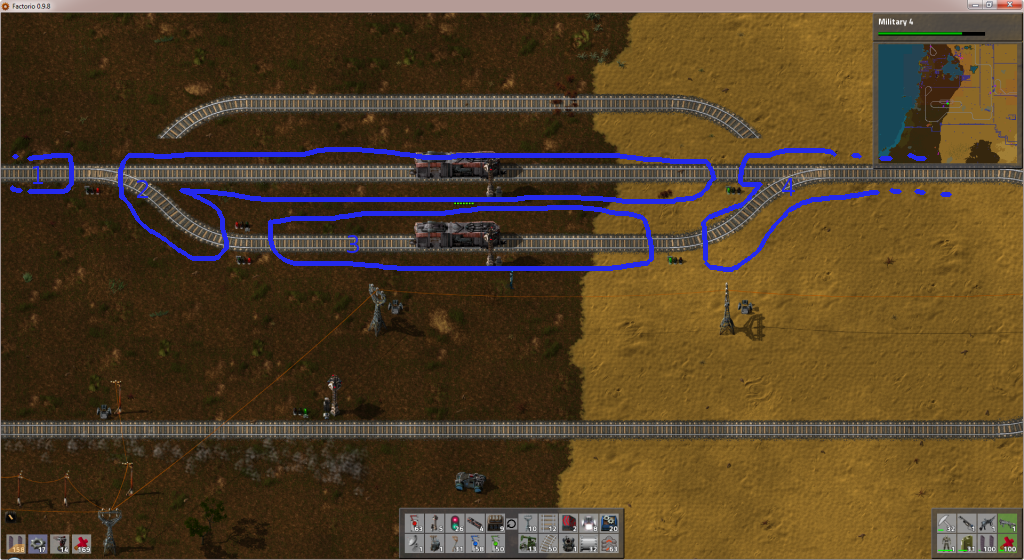
If there are no two trains sharing the same stop I would maybe move the leftmost signal to be in the top rail after the fork, that is - extending block 1 to include the entire fork, while limiting block 2 to be only the upper part.
I hope this makes it clearer

 )
)